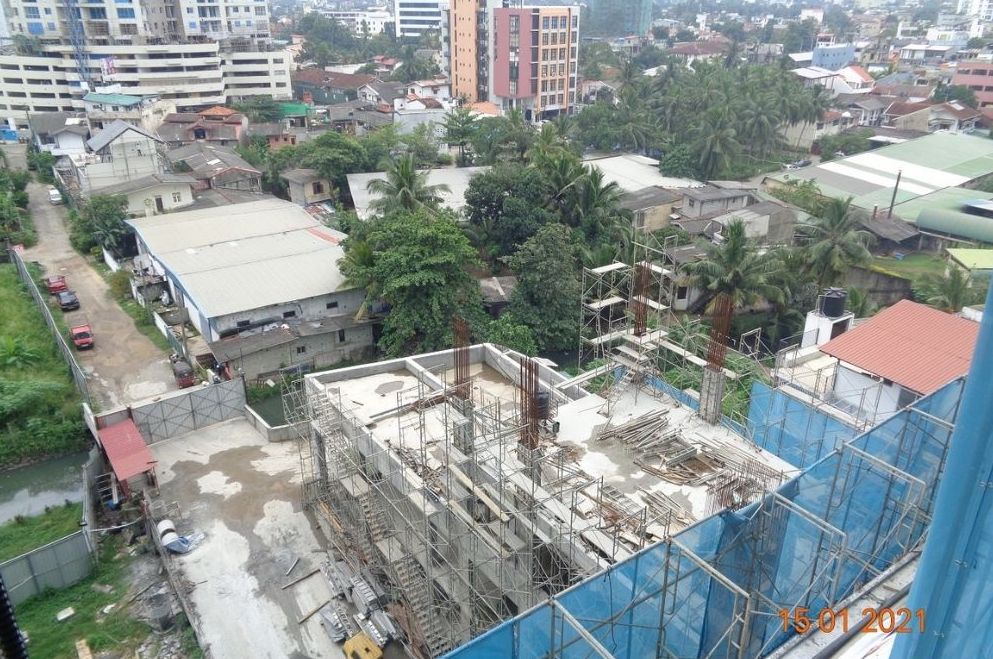The effect of COVID-19 on the high cost of construction in Sri Lanka
Sri Lanka has one of the highest construction costs in the SAARC region, creating significant concerns regarding affordability for housing for most of the urban population. Many live far outside the business centres enduring prolonged commutes, resulting in increased pressure on infrastructure and a decrease in the productivity of workers. There are a few key reasons for the high cost of construction, which can be alleviated by some appropriate action from the relevant authorities.
Horizontal development of land
Horizontal development and the ensuing scarcity of land in key urban centres has led to the exponential rise in the cost of land. It is important to note that Colombo has one of the lowest urban densities in South Asia and one of the highest proportions of individuals commuting into the city for work.
Therefore, the city is spread horizontally and not vertically making it difficult for its roads and public transport infrastructure i.e. trains and buses to support the commuter traffic travelling to the business centers within the city. Additionally, land speculation has pushed land costs beyond the feasible range for development projects.
The solution here could be for land to be agglomerated by the government and auctioned to developers towards affordable middle-class housing. Naturally, precautions should be taken to prevent hoarding by developers which can be done by specifying the time period for project completion.
Additionally, restriction of investment in land should be lifted for foreign investors constructing commercial or residential developments as these are ultimately sold to local buyers and does not result in the depletion of real estate stock held by citizens.
Import of vital construction material
Several key materials required for construction are not available in sufficient quantities from domestic manufacturers and thus, developers are reliant on importing them. Cement, steel, wires, tiles, kitchens are just a few examples.
Currently, many of these imports attract cess or duty. Thus, it is impossible to construct a building without incurring a large amount of customs duty costs. This naturally increases the construction cost which leads developers to raise prices of the finished apartments or offices.
To battle this, a careful balance needs to be struck between encouraging local manufacturing and preventing the creation of local monopolies. The former helps the nation, while the latter harms the nation and the consumer.
Alternatively, customs duties and cess should be reduced significantly for critical materials required to build and increase the housing stock of the nation. Ultimately, these cost benefits will pass on to the consumer and will lead to extensive housing stocks and property taxes, indirect taxes and direct taxes as the infrastructure fuels economic development.
Shortage of skilled labour
There is a shortage of semi-skilled and skilled labour in Sri Lanka, leading to quality and productivity issues on construction sites. For example, it is very difficult to find sufficiently skilled flooring masons, which impacts the speed of construction and the output per worker which results in an increased cost of construction.
The government can provide support on this front by introducing skills programs for unskilled workers to prepare them for jobs and careers in the construction industry. It will serve the dual purpose of reducing unemployment in areas with lower development as well as providing the much-required skilled labour for the construction sites. It can also encourage temporary labour imports from overseas.
The effect of Coronavirus
The impact of the Coronavirus on construction costs has mostly been neutral. On the one hand, there have been the inevitable costs of sites idling and workers being unable to work, which has increased project costs to some extent. On the other hand, the pandemic has finally led to a correction in the land market prices which may allow it to again reach a reasonable territory.
The significant factor that is yet to play out entirely is its impact on imports. Will foreign manufacturers be able to deliver items at contracted prices? Will alternative supply chains need to be created? As China falls out of favour, can developers secure better prices from other markets like India? And finally, how will the customs duty and tax regimes be impacted in the medium term?
In conclusion, the cost of construction in Sri Lanka is high, but artificially so. A few timely actions by the regulatory bodies can help remove some of the inefficiencies in the system and allow for the creation of more housing facilities at more affordable prices.
(The writer is the Managing Director of Iconic Developments and an alumni of the Wharton School of Business and INSEAD)
Summary
Sri Lanka has one of the highest construction costs in the SAARC region, creating significant concerns regarding affordability for housing for most of the urban population.
Horizontal development of land and the ensuing scarcity of land in key urban centres has led to the exponential rise in the cost of land.
Several key materials required for construction are not available in sufficient quantities from domestic manufacturers and thus, developers are reliant on importing them. This increases the construction cost which leads developers to raise prices of the finished apartments or offices.
There should be a significant reduction in customs duties and cess for critical materials to build and increase the housing stock of the nation whose cost benefit will pass on to the consumer and will lead to extensive housing stocks and property taxes, indirect taxes and direct taxes as the infrastructure fuels economic development.


